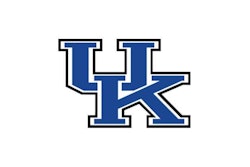Copyright 2018 Dayton Newspapers, Inc.
All Rights Reserved
Dayton Daily News (Ohio)
COLUMBUS — As expected, the required mandatory sit-out period for high school transfers has been switched from what it had been. That was one of seven referendum items that were all approved by the Ohio High School Athletic Association members and announced on Wednesday.
The sit-out period — effective immediately — requires transfer student athletes who don't meet exemptions to sit out the second half of a regular season and all of the postseason.
That's the opposite of what the sit-out period had been, which was the first half of the regular season.
That had become an increasingly hot-button issue among OHSAA membership over the last three years and especially in boys and girls basketball. The Ohio High School Basketball Coaches Association had become alarmed with programs that were building teams for postseason runs and state championships.
"That's not what high school sports is supposed to be all about," OHSAA commissioner Dr. Dan Ross said to a media advisory committee at its headquarters on Wednesday. "You're not supposed to be stacking teams and they were using the 50 percent rule to do just that."
That was the key referendum item school principals and association members were asked to address during the annual two-week spring vote period. Of the 664 votes, 430 were in favor of the new reversed sit-out period, or about 65 percent.
"Our coaches association was very adamant that they believed this was not going to stop recruiting," Ross said, "but would help them deter people from saying come over to us and we'll win a state championship."
The widespread accusations of recruitment of players continues to be a state-wide issue, no matter how big or small a school. The OHSAA initiated a landmark competitive balance initiative last fall to address students who reside outside a school district or do not come from a designated feeder school. That was the end result of an administrative movement that began nearly a decade ago from the imbalance of state championships won by private schools compared to publics.
There are many exemptions to the sit-out rule, most notably if there is a change of residence to the new school district. In that case, transfer students do not require a sit-out period.
Dr. Ross said competitive balance appears to be a hit among membership and is drawing nationwide interest, especially from Arizona, Texas and California. That's because Ohio's competitive balance numerical formula is applied to both private and public schools. Other similar state associations have applied a similar formula to just one or the other and in extreme cases, have separated state tournaments for private and public teams.
He said most state associations have a wait-and-see interest in Ohio.
"I don't think you can get a trend from one year," said Dr. Ross, who will be succeeded in September in his role as commissioner by current OHSAA director of sport management Jerry Snodgrass. "You need to go through the cycle, then look at the data."
»TWITTER: You should like @MarcPendleton
Read More of Today's AB Headlines
Subscribe to Our Daily E-Newsletter
Terms and Conditions Privacy Policy































